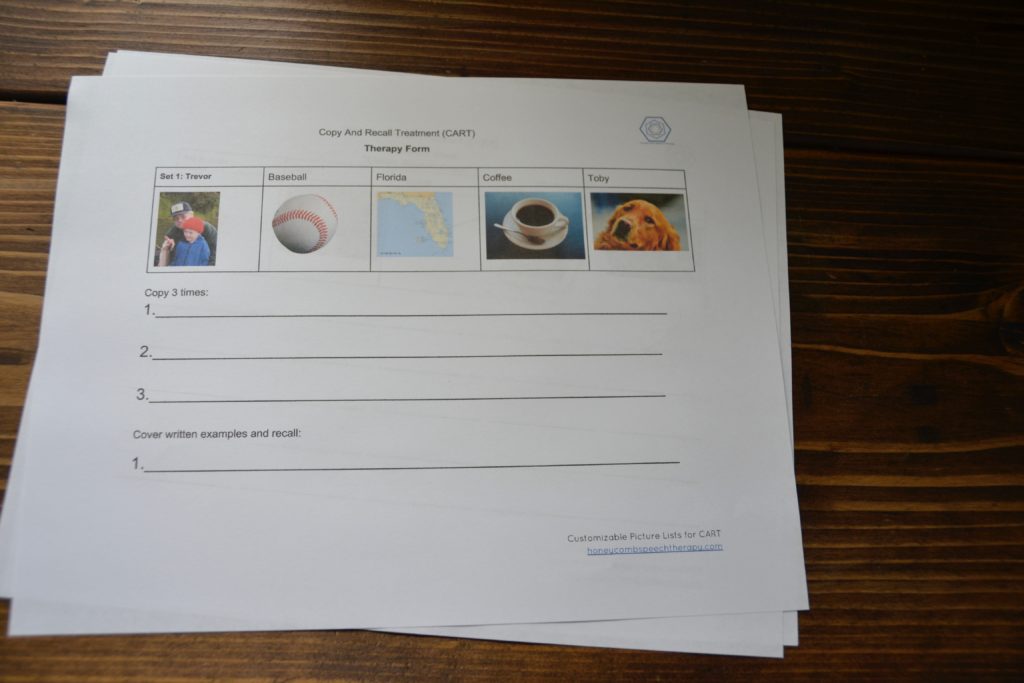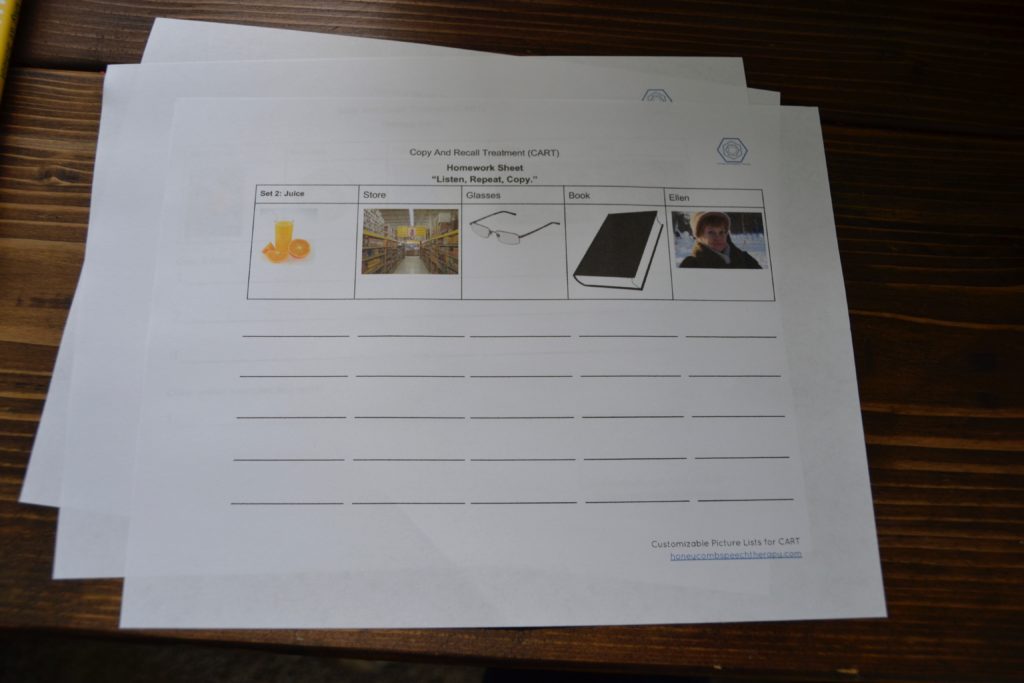If you are like me, you are busy treating patients during the day and can’t absorb a treatment protocol / prep materials / figure out who to use it with / figure out how to word things in documentation… all on your lunch break.
Here’s where The One Click series comes in. This series highlights various treatment protocols that are evidence-based, and I provide everything you need to implement the therapy in just One Click (or 1 download!). Each topic includes a person-centered section to explain how you can use the materials in a person-centered way.
Today we are talking about Copy And Recall Training (CART). Did you know this method has been applied to texting as well as writing? Talk about functional! If you’re new to CART, check out my free cheat sheet (below!)–it includes protocol for CART + repetition and CART for texting. I’ve also created a CART Packet with everything you need to use CART in speech therapy! {From customizable picture word lists that are a cinch, customizable homework sheets, in-session data tracking, documentation samples, and more!}
*Please note the following are my personal notes from reading the research; key references below if you would like to review them yourself.
Who should I use CART with?
-CART has been used with adults with aphasia, with writing or spelling challenge.
-Studies did include those with severe apraxia
-Best results happened with those who had some residual phonological ability, good visual problem-solving
-CART for Texting: Persons should have basic physical skills for texting, such as being able to hold phone and use one hand to push buttons.
What sort of goals would CART address?
-Improved writing/spelling of trained words
-Improved naming of trained words
-Improved texting of trained words
What does the evidence say I should expect?
-Spelling and naming for trained words should improve (generalization not consistently demonstrated)
-Improved written word retrieval
-Improved reports of quality of life if writing/texting is important to Person
-Words trained by handwriting had longer durability than those trained by texting
How does CART relate to a person-centered approach?
-The words used in CART are individualized, and developed in a therapy session so they carry high meaning/high use for the Person
-Improving writing or ability to text could have a large improvement in quality of life, if this is important to the Person you are working with. Words should be chosen to maximize function/participation.

What do I need to use CART in speech therapy?
–FREEBIE ALERT! I’m sharing the Cheat Sheet I made from reading Dr. Beeson’s articles (Definitely read the articles! However, I found that I needed notes during the session to assist in giving clear directions for CART + repetition and CART for texting).
Click Here To Download Cheat Sheet for CART –> CART Protocol Cheat Sheet
–One Click: Download the CART Packet! You are ready to go with personalizing picture word lists in a snap!
This 10-page, 2 download purchase will allow you to do CART tomorrow, with no further prep. I’m especially excited about sharing the Customizable Picture Lists for CART: You can use it to add pictures in a snap during a session to create a personalized Meaningful Word List with pictures, and then use those to send home a personalized homework sheet with only a few clicks! No work needs to be done outside the session. You will use Google Docs for this; instructions are included to make sure you save this in Google Docs. I also created an in-session data tracking form for quick comparison across sessions. Finally, I created documentation samples you can copy and paste, filling in data from the session.
The CART Packet will allow you to create personalized picture lists for each person you work with during the session (instructions included!):


